10 Seedy Stories From The Golden Age Of Hollywood
Hollywood is touted as a magical place where dreams come true, where you can be a nobody one day and a star the next. However, if you scrub hard enough, you can see the grime embedded deep into the history of Tinseltown.
10 - How It All Began

There was a time when Fort Lee, New Jersey, was the movie capital of the world. In fact, the entire industry was dominated by one man: Thomas Edison. He owned most patents related to motion pictures. In 1908, to further increase his influence, he founded the Motion Picture Patents Company, commonly referred to as the Edison Trust. It was comprised of all the major film companies at the time, plus the leading distributor and film stock supplier. Anyone who wanted to screen a film in the United States had to pay up. Anyone who wanted to make a movie had to do so under the Trust’s strict rules. This included using only preapproved, patented equipment, limiting run times to 20 minutes, and avoiding film credits, which would increase actor recognition and lead to bigger pay demands.[1]Those who went against the Trust were sued. If that didn’t work, Edison wasn’t above hiring private detectives to bully and harass the competition. On one occasion, the Trust allegedly bribed an exhibitor to show movies of William Fox (founder of 20th Century Fox) in a brothel to give them grounds to cancel his license. Eventually, filmmakers sought greener pastures. They settled on Hollywood because it had diverse scenery and relaxed patent laws. Their success enabled these indie renegades to fight Edison on antitrust laws and win. The Edison Trust was officially terminated in 1918, and America’s movie capital moved to Hollywood.
9 - ‘No Dogs Or Actors Allowed’
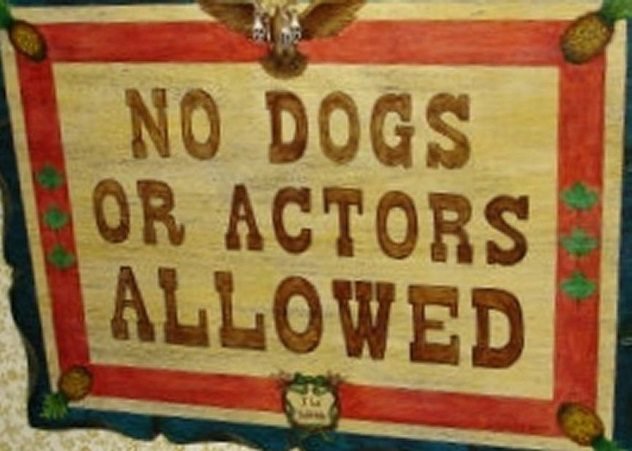
Filmmakers’ infatuation with Hollywood was not reciprocated at first. Most of Hollywood’s population consisted of farmers who didn’t want anything to do with show business, which, even back then, had a reputation for debauchery. Boardinghouses and apartment buildings soon started displaying signs that read “No Dogs Or Actors Allowed.”[2]Another section of Hollywood’s population consisted of businessmen such as land developers and oil tycoons. They also weren’t interested in dealings with film studios because they considered the movie colonization of Hollywood a passing fad. In fact, when Carl Laemmle wanted to open Universal City Studios, he actually had to build it on a converted farm in the San Fernando Valley because nobody in Hollywood wanted to sell him land.The residents’ attitudes slowly changed once Hollywood became the thriving heart of the movie industry. This was thanks in no small part to people like Laemmle, who employed the star system to promote their movies. By using film credits, actors were given increased exposure, and films could be marketed around their star power. One prominent example was Florence Lawrence, lauded as the “First Movie Star.” Prior to moving to Universal, she was simply known as the “Biograph Girl” while working in New Jersey. Other examples included King Baggot, Hollywood’s first leading man, and “America’s Sweetheart” Mary Pickford.
8 - Birth Of The Hollywood Scandal

The Roaring Twenties turned Hollywood actors into the biggest stars in the world. With fame and money came excess and opulence. Their overindulgence kicked off the tradition of the Hollywood scandal, a favorite US pastime still enjoyed to this day.The 1920s were filled with plenty of ignominious offenses. Charlie Chaplin made several rushed trips to Mexico to marry underage actresses who were reportedly pregnant with his children. William Desmond Taylor’s murder remains unsolved to this day. The biggest scandal of all was the Fatty Arbuckle trial, which permanently ruined the career of Hollywood’s biggest box office draw.What was arguably the first Hollywood scandal is all but forgotten today. It involved Jack Pickford and Olive Thomas. Jack, the brother of Mary Pickford, developed a “boy next door” image even though, in reality, he was a serious drinker and womanizer. Olive was a former Ziegfeld girl who performed in risque burlesque shows before gaining a successful movie career. Pickford’s reputation took a hit after World War I, when he was implicated in a scheme wherein wealthy young men bribed military officers for safe, cushy positions. He almost received a dishonorable discharge but was spared, allegedly after the involvement of his sister.[3]Things got worse in 1920, when Olive Thomas died by ingesting mercury bichloride, a medication her husband was taking to treat syphilis sores. Her death was ruled an accident, but rumors swirled that it could have been suicide or even murder.
7 - The Booze And The Drugs
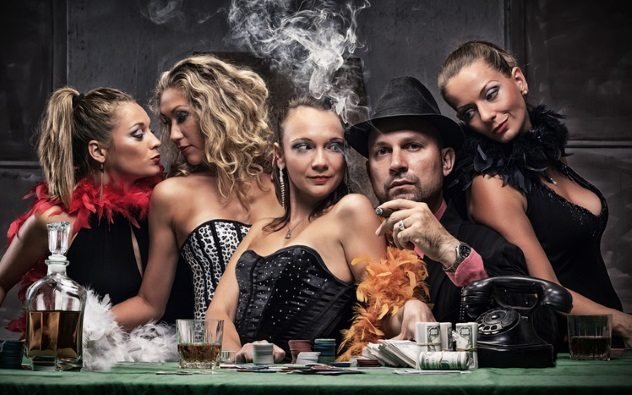
For most of the US, the 1920s was the decade of abstinence. The same rules did not apply to Hollywood. Openly, the industry supported Prohibition. Actors spoke favorably about it, and movies often portrayed bars and saloons as violent places for people of ill repute. After all, Hollywood had a vested interest in people trading in a night at the bar for a night at the movie theater. Behind closed doors, though, many actors became world-class drug and alcohol enthusiasts. The 1920s was when the “Hollywood lifestyle” took shape in its full form. Of course, it didn’t take long for the lifestyle to start taking its toll. Newspapers were filled with headlines of actors being checked into sanitariums to treat various “illnesses,” and sometimes, they paid a heavy price. In 1923, Wallace Reid, known as “the screen’s most perfect lover,” died in a sanitarium while struggling with a morphine addiction. A few years later, Barbara La Marr died of nephritis and tuberculosis, both the result of years of drug and alcohol addiction. In 1929, Jeanne Eagels died of a drug overdose at the height of her career, thus becoming the first actor to receive a posthumous Oscar nomination.[4]The frequency of such scandals led Hollywood studios to introduce “moral turpitude clauses” in their contracts.
6 - Welcome To Hollywoodland
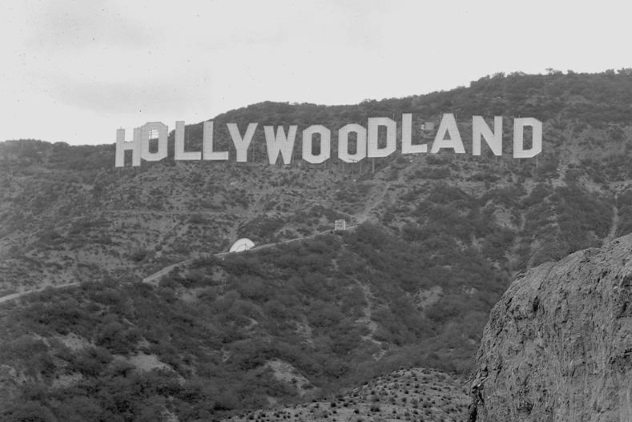
There is no landmark in Los Angeles more iconic than the Hollywood sign. However, this was far from its intended purpose. Originally, the sign, which read “Hollywoodland,” was meant to advertise a new housing development in the hills. It had flashing lights and was only designed to last for a year and a half. However, due to its popularity, it eventually fell under the purview of the Hollywood Chamber of Commerce in 1949.The sign has not had an easy life. It suffered severe deterioration over the decades and had to be restored several times. It has also been the target of multiple vandals, who’ve modified the letters to read things like “Hollyweed” and “Ollywood.” The darkest moment in the sign’s history occurred on September 16, 1932m when 24-year-old struggling actress Peg Entwistle climbed on the “H” and jumped to her death.[5] Her death garnered a lot of publicity. Newspapers of the day blamed her failed acting career, although modern historians contend she was likely suffering from depression. A legend sprang up that there was a letter waiting in her mailbox, congratulating Entwistle on getting the lead role in a new play about a suicidal woman.
5 - The First Hollywood Blockbuster
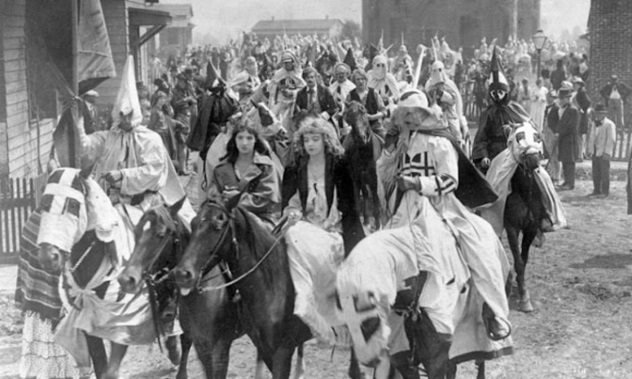
1915 saw the release of Hollywood’s first true blockbuster: D.W. Griffith’s The Birth of a Nation. Critics instantly hailed it as a masterpiece. Griffith was heaped with praise for many groundbreaking filming techniques that would become the industry standard for years to come. The public loved it, and The Birth of a Nation became the highest-grossing movie of all time, a record it kept for almost 25 years until Gone with the Wind. It was also the first movie screened in the White House. However, it also remains one of Hollywood’s most controversial films to this day due to its blatant racism.With a run time of three hours, The Birth of a Nation was the longest movie ever made at the time. It told the story of the Civil War and America’s reconstruction afterward. However, it became infamous for its negative portrayal of black people and the heroic light shined on the Ku Klux Klan, who saved the day on multiple occasions. While Griffith ushered in the era of Hollywood, he did so at the expense of the African American community. For decades afterward, black actors were stuck playing supporting characters, often as comical relief or subservient roles.More importantly, many blamed the popularity of the movie for a renewed interest in the KKK, which received a surge in membership following its release. The Birth of a Nation was deemed the most effective recruiting tool in the Klan’s history. When investigative journalist Dick Lehr infiltrated the KKK in the 1970s, he discovered it was still used even then as propaganda for new recruits.[6]
4 - Studios And Their Actors

The Golden Age of Hollywood was dominated by the studio system. Among other things, this meant that actors signed long-term contracts with one studio. Unlike modern actors, who are free to pick and choose the roles they want to play, actors back then filmed the movies the studios wanted and had little control over their careers.It didn’t take long before studio bigwigs started seeing actors simply as cash cows to be squeezed for all they were worth and then replaced. In an effort to maximize marketability, studios exerted huge influence on their stars, basically controlling all major decisions in their lives.Child actors had it particularly rough. Studios appointed chaperones who were there, mostly, to spy and report back. Famously, Judy Garland was kept on a studio-mandated diet consisting of soup, coffee, and cigarettes to stay thin and was regularly given amphetamines and barbiturates to make it through long working days.Another child actor, Mickey Rooney, continued to have problems into adulthood when studio head Louis B. Mayer forbade him to marry Ava Gardner in order to maintain his wholesome image. This was common at the time. Many female sex symbols such as Jean Harlow were also denied marriage to maintain their status. Conversely, gay actors like Rock Hudson were expected to stay closeted and accept marriages arranged by the studios. Children were out of the question without studio approval, and many pregnant actresses had to have secret abortions.The most extreme abuse arguably came from Harry Cohn, president of Columbia Pictures. In order to prevent an interracial marriage between his star, Kim Novak, and Sammy Davis Jr., he used his mob connections to threaten the singer with crippling and blindness.[7] Davis then had 24 hours to marry any black singer in order to dispel lingering rumors.
3 - Hollywood And Hitler
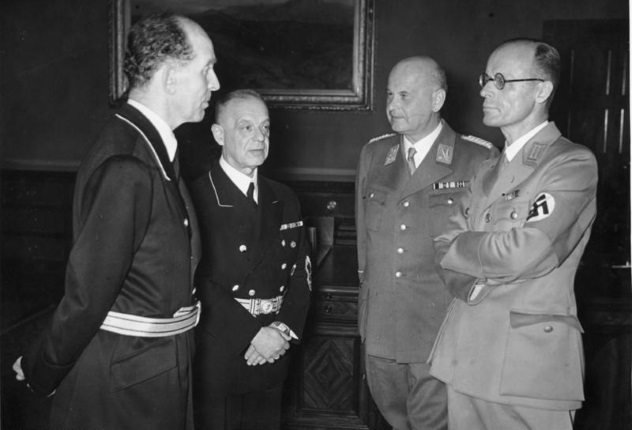
Hollywood has been known to censor or even reshoot entire scenes to make movies acceptable for certain foreign markets. Nowadays, this typically happens with films being released in China. During the 1930s, though, those sympathies were extended to Nazi Germany, which was regarded as one of the most lucrative markets outside the United States.Most of these accusations have appeared in recent years courtesy of several books on the matter. Most scathing was that of Harvard scholar Ben Urwand, who claimed that Hollywood regularly collaborated with Germany to portray Nazis in a favorable or at least neutral light, while at the same time downplaying the efforts of Jewish cast and crew members. The man in charge was Georg Gyssling, a German diplomat based in Los Angeles who became known as “Hitler’s Hollywood consul.” He threatened US studios with a German regulation stating that a company distributing an anti-German film anywhere in the world could have all its movies banned in Germany.[8] He had further support from Joseph Breen, a film censor in charge of enforcing the Hays Code, who was also a staunch anti-Semite.The first film alleged to receive special consideration was the 1930 war movie All Quiet on the Western Front. It was reedited to make the Germans appear more heroic on the orders of Universal Studios head Carl Laemmle.
2 - The Blacklist
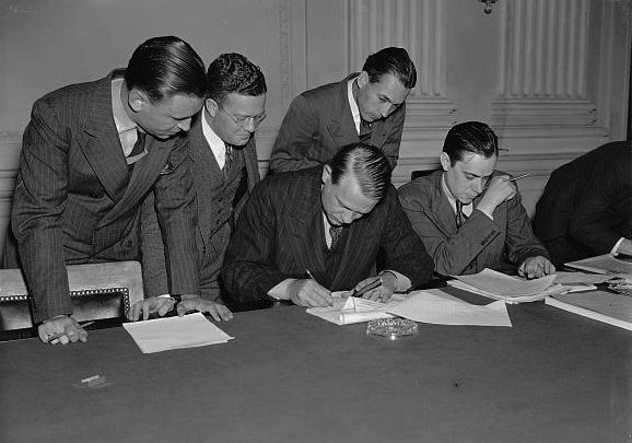
While movie studios seemed content with tacitly supporting Nazism, it was another story with communism. During the 1940s and 1950s, most of the US was going through the “Second Red Scare,” and Hollywood was no different. Many actors, directors, and screenwriters rumored to have communist sympathies were blacklisted from Hollywood productions and became pariahs, with some even serving prison sentences.The fear of communism started in the late 1930s, when House Un-American Activities Committee (HUAC) chairman Martin Dies published a report claiming that the ideology was pervasive in Hollywood. Many studio executives were keen to distance themselves as soon as possible from these allegations, while others saw opportunities to blame their own problems on communism. One example was Walt Disney ascribing his studio’s animators’ strike in 1941 to “communist agitation.”Many Hollywood figures were called in to testify before the HUAC and found that the quickest way to escape suspicion was to accuse someone else. The concept of a public blacklist came from Billy Wilkerson, publisher of The Hollywood Reporter. He started his own column naming communist sympathizers in 1946, which quickly became known as Billy’s List.[9]Out of the first groups of people interviewed by the HUAC, ten refused to answer questions, pleading the First Amendment. These men, all screenwriters and directors, became known as the Hollywood Ten. They were charged with contempt, sentenced to jail, and blacklisted from Hollywood. Their work went uncredited or was given to an alias. This included Dalton Trumbo, whose screenplays won two Academy Awards for Roman Holiday and The Brave One.
1 - The Mob Comes To Hollywood

Hollywood was a place of glamour and excess but also one of violence. With Los Angeles becoming one of the biggest cities in the country, it was just a matter of time before the mob wanted a piece of the action. The Los Angeles crime family became active at the start of the 20th century but reached its peak during the 1940s under Jack Dragna, who secured a spot on the Commission. Dragna got competition from Bugsy Siegel, who moved his operations to Los Angeles. Despite being Jewish, Siegel had close ties to the New York families, and as long as he generated income, he was untouchable. Bugsy also embraced the Hollywood lifestyle and became a staple of Beverly Hills parties, where he rubbed elbows with the city’s biggest stars.Siegel was eventually assassinated in 1947, and his operation was taken over by his right-hand man, Mickey Cohen. He was less inclined to work peacefully with Dragna and started a gang war that saw Cohen escape 11 attempts on his life.[10] At the same time, Cohen made sure to enjoy his notoriety as publicly as possible, modeling his career on that of Al Capone. His biggest headline, however, came courtesy of his enforcer, Johnny Stompanato, who was stabbed to death by the daughter of his girlfriend, actress Lana Turner.
Follow me @soulaiman